Dealing with Dallisgrass
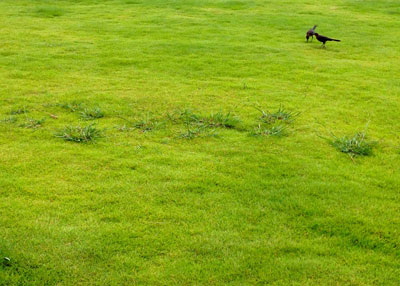
Dallisgrass is very coarse-textured and easy to see.
Many people misidentify dallisgrass. Let’s outline a few characteristics to help you nail it all down.
• Perennial grass that comes back from clumpy root system.
• Deep green leaves and almost no runners. Grows to 18 to 24 inches in bloom. (Crabgrass has bright green foliage and short runners. It’s also an annual weed that dies out completely in winter. Johnsongrass has bright green leaves, but it comes up from large, fleshy roots and quickly grows to 3 to 6 feet tall if not mowed.)
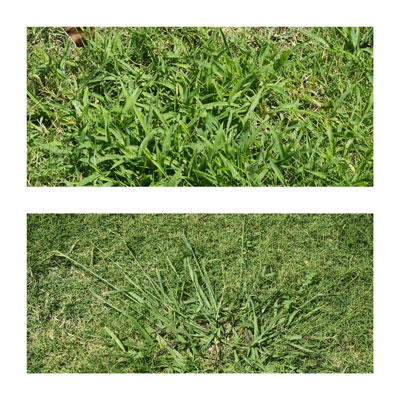
Annual crabgrass (above) and perennial dallisgrass (below) are often confused. Click for a larger photo.
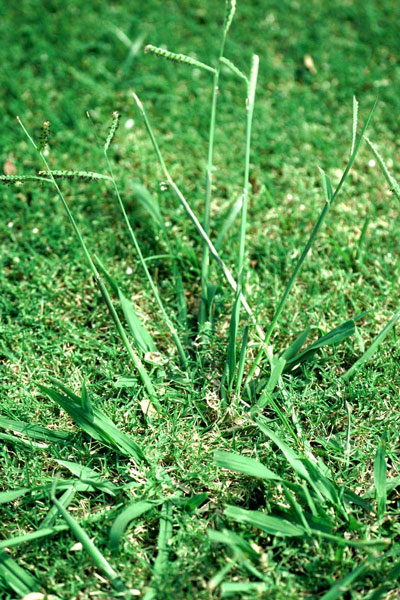
Dallisgrass seedheads have a unique form compared to other weed grasses.
• Dallisgrass flower stalks pop up soon after mowing – often just a day or two later.
• Flower heads/seed stalks are arranged like an old-fashioned power pole, with crossarms coming out on opposite sides. (Crabgrass has whorled/spiraled seedheads and Johnsongrass has plumes.)
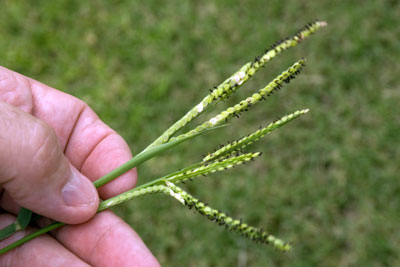
Black specks are quite visible with dallisgrass seeds.
• Seeds develop almost immediately along the crossarms of the seedheads. They are BB-sized, flattened and each has one or more black peppery specks attached.
Control Measures
• If you see a new clump starting to grow, dig it out with a sharpshooter spade. The roots will be in one tight mass. Remove the mass and you will have removed the clump.
• Straight glyphosate herbicides (no other active ingredients) will kill the clumps out. Unfortunately, they also kill your desirable grass at the same time, so you must be precise in applying them.
• Spot treat with a pump sprayer at low pressure, applying the herbicide directly to the dallisgrass foliage.
• Or apply the herbicide with a foam rubber paintbrush, using care not to dribble it over desirable plants.
• Or (my favorite tip from a FB friend): Cut the bottom out of an empty one-gallon milk jug. Remove the top. Position the jug over each clump, then spray into the jug, taking care not to let the weedkiller dribble outside the jug in the process.
• There are no herbicides you can use to kill dallisgrass in existing turf. MSMA used to be available, but it was withdrawn from the market several years ago.
• Pre-emergent weedkillers would help, but only to stop seeds that are being produced. Mow frequently and that problem won’t happen. Use the other techniques to eliminate the mature clumps and you’ll get to the finish line faster.
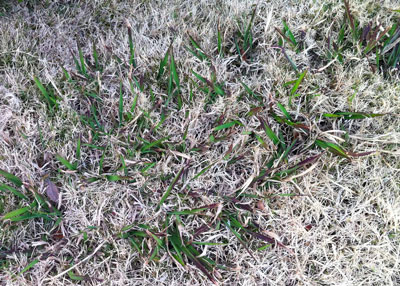
Dallisgrass in completely dormant bermuda lawn in mid-winter.
An alternative option for the really brave:
(This is not something you’ll hear me recommending very often. It requires astute awareness of the homeowner.)
Commercial landscapers will occasionally apply glyphosate-only weedkiller to dallisgrass clumps while lawns are completely dormant. Chance of damage to the lawn is reduced, but it must be done before bermuda runners start to turn green. Try a small patch first, then wait a few days to see if you like the results.
